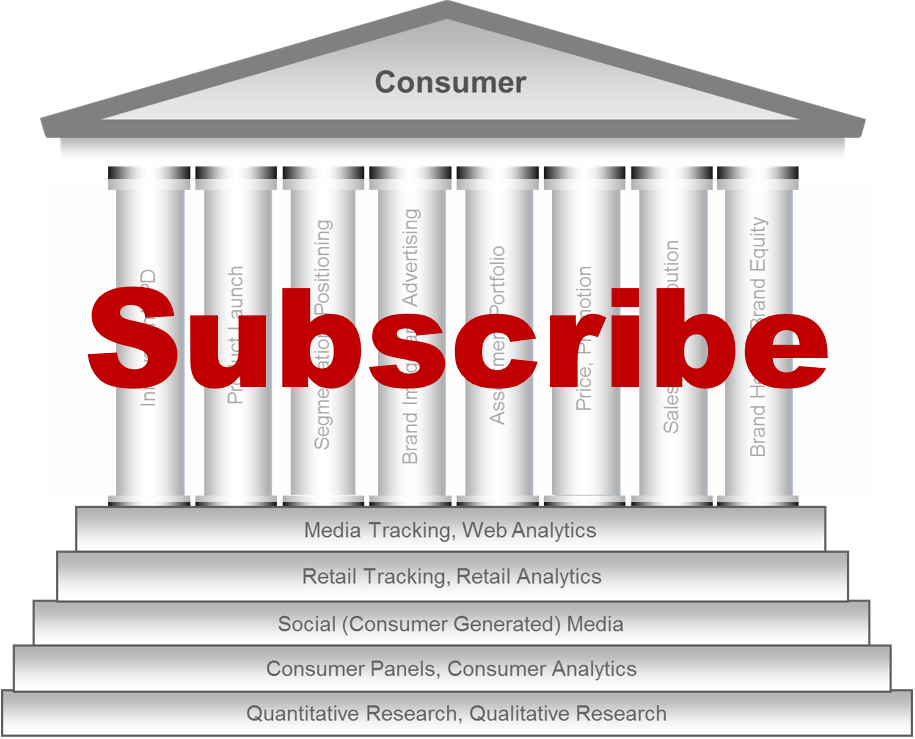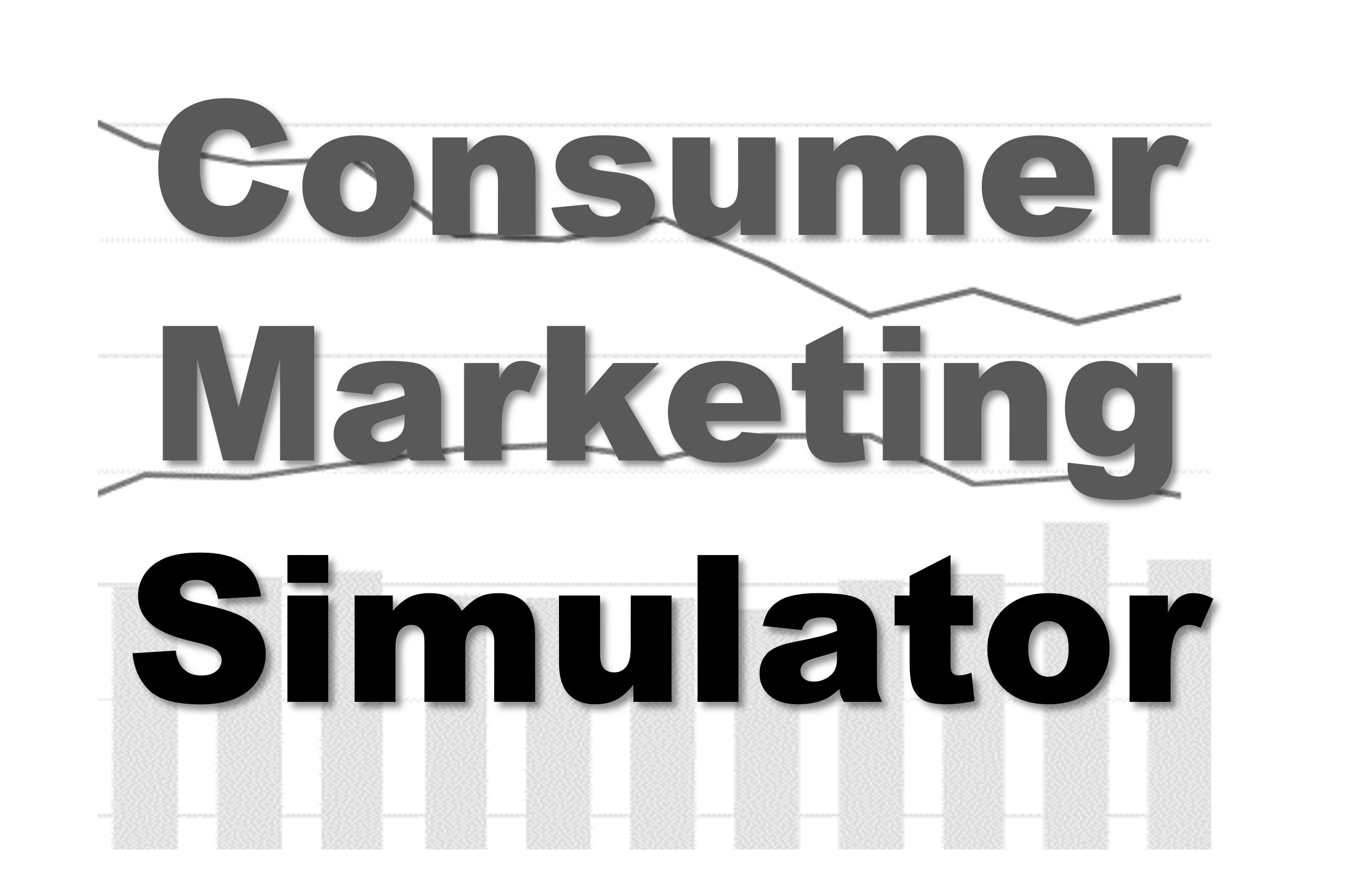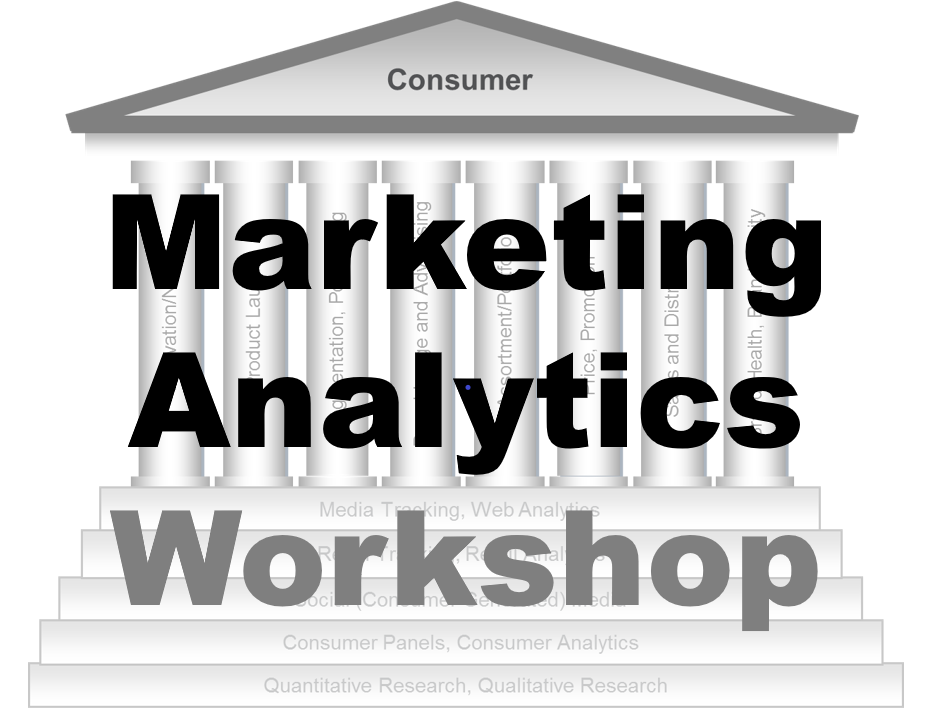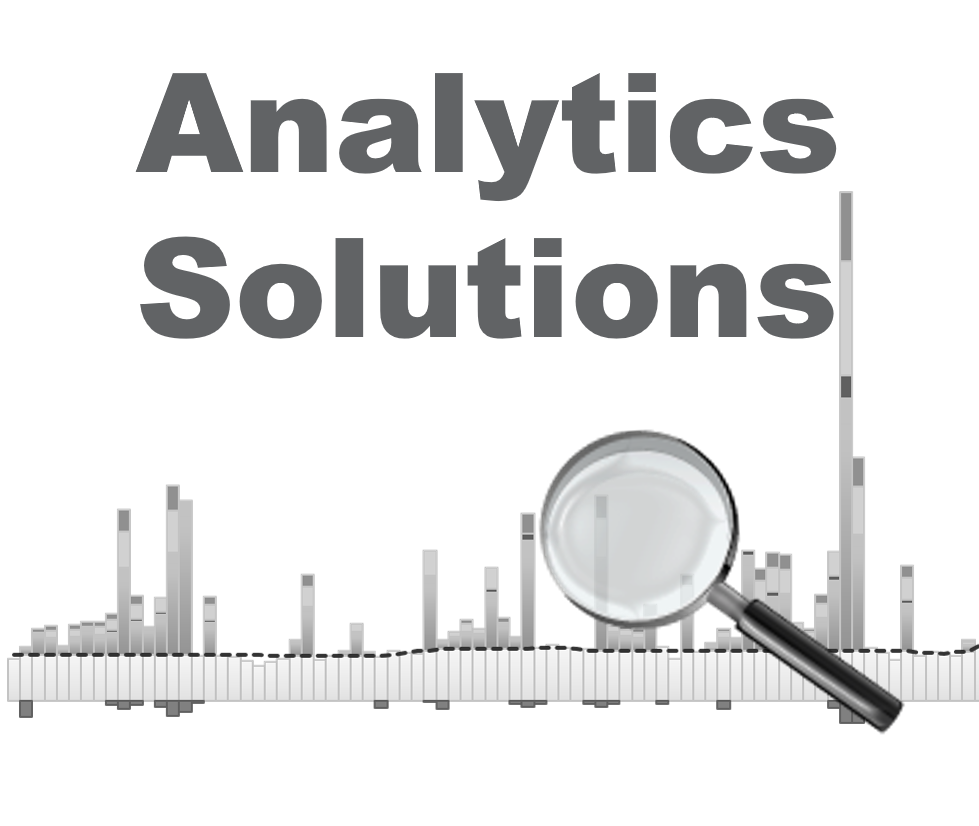The Marketing Analytics Practitioner’s Guide
Contents (online)
- Preface
- Author
- Contents
Part I Brand
- Pink Diamonds?
- Preview
- Lesson from the Summer of 1985
- Brand
- Positioning
- Brand Image Tracking
- Image Profiling
- Perceptual Maps (Correspondence Analysis)
- Thums Up
- Brand Health
- Preview
- ZEN versus iPod
- Benefits of Brand Equity
- The Loyalty Pyramid
- Net Promoter Index and Net Advocacy Index
- Brand Equity Models
- BrandDynamics — Meaningfully Different Framework
- Other Models
- Brand Equity Index
- Data Interpretation and Analysis
- Drivers of Brand Equity
- Brand Image
- Example Inulas
- Overview — Brand Equity Model
Case I Shopper Trends
Part II Consumer
- Schizophrenic Consumers
- Preview
- Need-States
- Segmentation
- A Priori Segmentation Methods
- Post hoc Segmentation Methods
- Segmentation Analysis
- Targeting
Chapter 4 Qualitative Research
- Preview
- Difference between Qual and Quant
- User-Generated Content and Conventional Market Research
- Benefits and Limitation of UGC
- The iSnack 2.0 saga
- UGC Complements Conventional Market Research
- Applications of Qualitative Research
- Exploratory
- Explanatory or Diagnostic
- Evaluative
- Qual with Quant Research
- Product Development
- Creative Development
- Motivational Research, Semiotics, Usage &Attitude
- Packaging Development
- The Qualitative Advantage
- Watchouts
- Modes of Data Collection
- Group Discussions
- Interviews
- Observation
- Online Qual
- Research Design and Preparation
- Projective and Enabling Techniques
- Word Association
- Third Party Questioning
- Sentence Completion
- Personification
- Brand Mapping
- Drawing and Collage
- Bubble Drawings
- Role-Playing
- Laddering
- Body Language
- Guidelines for Moderating Groups
- Handling Potential Problems
- Analysis and Interpretation
Chapter 5 Quantitative Research
- Preview
- Problem Definition
- Research Design
- Questionnaire Design
- Information Needs
- Sampling
- Data Collection
- Online Research
- The Analysis Process
- Interpretation and Recommendation
Chapter 6 Customer Satisfaction and Customer Value
- Retention and Attrition
- Preview
- Evolution of Customer Satisfaction
- Customer Satisfaction and Employee Satisfaction
- Customer Loyalty
- Customer Satisfaction Research
- Transaction Survey
- Relationship Survey
- Drivers of Customer Loyalty and Satisfaction
- Interpretation and Recommendation
- The Kano Model
- Customer Value
- Customers’ Purchasing Philosophy
- Value-in-Use Analysis
- Value Assessment
- Overview — Customer Value Management
- Customer Lifetime Value
Chapter 7 Consumer Analytics and Consumer Panels
- Preview
- Consumer Panels
- Research Methodology
- Width and Depth of Purchase
- Buyer Groups
- Profile Analysis
- Brand Loyalty (Behavioural)
- Trial and Repeat Purchase
- Overlap
- Basket
- Gain–loss
- Case Example — Johnson’s Body Care
- Appendix — Gain–loss Algorithms
- Standard Gain–loss Algorithm
- Nested Gain–loss
- Hierarchical Gain–loss
Chapter 8 Consumer Analytics and Big Data
- Preview
- Big Data
- Data Management Tools and Technologies
- Consumer Analytic Techniques
- Machine Learning Techniques
- Data Mining
- Sourcing from Social Media
- Optimization/Analysis Techniques
- Visualization
- Cognitive Systems — the 3rd Age of Computing
- Benefits
- People
- Applications
Case II Vizag
Case III Hectomalt
Part III Product
Chapter 9 New Product Development
- Preview
- Innovation
- New Product Development Process
- Ideation
- Knowledge Immersion
- Consumer Immersion
- Generating Insights
- Observation
- Generating Ideas
- Fulfil Unmet or Poorly Met Needs
- Make Connections
- Challenge Conventional Beliefs, Reframe Categories
- Customers as a Source of Ideas
- Concept Development
- Product Development
- Development — Design
- Development — Marketing Mix
- Development — Validation
- Development — Alpha and Beta Testing
- Product Launch
- Launch Evaluation
- IBM 360
- Preview
- Sensory Research
- Concept/Product Testing
- Consumer Product Rating
- Triangle Tests
- Biometrics
- The Kano Model and Conjoint Analysis
- Conjoint Analysis
- Developments in Conjoint Analysis
- Adaptive Conjoint Analysis
- Choice-based Conjoint Analysis
- House of Quality
- Preview
- Moments of Truth
- Launch Validation Methods
- Simulated Test Markets
- BASES
- Controlled Store Test
- Product Launch Evaluation
- Parfitt–Collins Model
- TRB Share Prediction Model
- The Bass Diffusion Model
Case IV Hecto Grow
Part IV Advertising, Packaging and Biometrics
Chapter 12 How Advertising Works
- Tradition of Great Advertising
- Preview
- Advertising through the Ages
- Advertising Mechanisms
- Salience
- Persuasion
- Likeability
- Symbolism
- Relationship and Involvement
- Emotion
- Advertising Execution
- Case Example — Coca-Cola Zero
- Measurement Issues
Chapter 13 Advertising Analytics
- Preview
- Audience Measurement
- People Meter
- Passive People Meter
- Portable People Meter
- OTT Services
- Internet Protocol TV
- Return Path Data
- Viewer Analytics
- Gross Rating Points
- Digital Audience Measurement
- Total Audience Measurement
- Copy Testing (Pre-Testing)
- Testing Advertising Online
- Advertising Tracking (Post-Testing)
- Continuous Interviewing versus Dipsticks
- Tracking Questionnaire
- Advertising Engagement
- Behavioural Engagement
- YouTube Analytics
- Attitudinal Engagement
- Branded Memorability
- Persuasion
- Uniqueness
- Likeability
- Image and Symbolism
- Involvement
- Communication
- Emotion
- Case Example — Molly Low-Fat Hi-Calcium
- Awareness Index Model
- Preview
- Tropicana Saga
- How Packaging Works
- Packaging Development
- Review
- Exploration
- Screening and Optimization
- Validation
- Shelf Impact — Eye Tracking
- Shelf Impact — Visual Search Test
- Biometrics-Engagement
- Preview Biometrics
- Eye Tracking
- How it Works
- Devices
- Metrics
- Fixation, gaze points and scan paths
- Heatmaps
- Pupillometry
- Eye Language
- Applications
- Electroencephalography (EEG)
- Frequency-based Analysis
- Metrics
- Frontal Asymmetry: Approach-Avoidance
- Cognitive-Affective
- Facial Coding
- Facial Expressions
- Facial Action Coding System (FACS)
- Metrics
- Analysis
- Application
- Galvanic Skin Response
- Devices
- Analysing GSR Signals
- Metrics
- Applications
- Biometrics Applications
Part V Price and Promotion
- At What Price Should We Sell Our Product?
- Preview
- Basics of Pricing Research
- Importance of Realism in Pricing Research
- Price Elasticity of Demand
- Factors Affecting Consumers’ Sensitivity to Price
- Shrinkflation
- Pricing Research Methods
- Gabor–Granger
- Van Westendorp Price Sensitivity Meter
- Brand Price Trade-off
- Conjoint Analysis
- Discrete Choice Modelling
- Hierarchical Bayes
- Interaction Effects
- Discrete Choice Model versus conventional Conjoint Analysis
- Case Example — Rationalizing Brand Range
- How to Price a Product Feature
- New Product Pricing
- BASES Price Advisor
- STM-DCM approach
- Appendix: Statistical Structure — Discrete Choice Model
- Preview
- In-Store Promotion and Media
- Types of Promotions
- Trade Promotions
- Consumer Promotions
- The Need to Rationalize Promotions
- Promotion–Commotion–Demotion
- Promotion Evaluation — Metrics
- Basic Assessment of Sales Promotions
- Market Modelling
- Promotions Response Model
- Model Validity: How Good is the Fit?
- Watchouts and Guidelines
- Interpretation and Analysis
- Discount Elasticity
- Cannibalization
- Displays and Cooperative Advertisement
- Sales Decomposition and Due-To analysis
- What-if Analysis
Case V Yakult
Part VI Digital
- Preview
- New World
- Uprisings
- New Media
- Social Cloisters
- Spread of Misinformation — Fake News
- Propaganda and Fake News
- Lessons for Marketers
- New Rules, New Perspectives
- Social Listening
- Levelling the Marketing Playing Field
- Co-creation
- Crowdsourcing
- Riding the Long Tail
- Permission Marketing
- Inbound and Outbound Marketing
- Word-of-Mouth (Advocacy)
- New World (Example): Digital Transformation in Real Estate
- Consumer Trends — Media Consumption
- Online Video Distribution Trends
- Interactive Television
- Internet Basics
- Preview
- New Media, New Imperatives
- “People Power”
- Engaging with Consumers in Cyberspace
- Managing Word-of-Mouth and Brand Meaning
- Heightened Accountability
- Dove Bottle Advertisement
- Market Globalization
- Marketing to Individuals
- Media Convergence
- “Data Power” — Metrics and Analytics
- What Works Online — How to Get Discovered
- Sugarpova
- Chobani
- Building Online Assets
- Websites
- Blogs
- Internet Forums
- Social Media
- Apps
- Content is King
- Personalization
- Buzz (word-of-mouth)/Influencer Marketing
- Growth of Advertising on the Internet
- Advertising on the Internet
- Outbound Advertising
- Inbound Advertising
- Viral Advertising — Challenge of Reaching the Masses
- Digital Advertising Formats
- Pricing Models
- Targeting
- Mobile Advertising
- Search Advertising
- Social Media Advertising
- Preview
- Facebook Marketing — Vegemite
- Facebook Marketing — Singer Sewing Company
- Organic Reach
- Edge
- EdgeRank
- Organic Marketing — Best Practices
- Paid Options
- Boost Post
- Facebook Advert
- Campaign Objectives
- Engagement Objective
- Advert Targeting
- Dark or Ghost Posts
- Call-to-Action button
- Placing Advertisement
- Ad Formats
- Ad Format — Image
- Ad Format — Video
- Ad Format — Stories
- Ad Format — Carousel
- Ad Format — Collection
- Ad Format — Instant Experience
- Bidding
- A/B Testing
- Facebook — Exercise
- Preview
- How is Twitter Different
- Hashtag (#)
- Trends
- Twitter Successes
- Content — Best Practices
- Marketing with Twitter
- Twitter Ad Campaigns
- Twitter Analytics
- Twitter — Exercise
- Preview
- Limitations of Instagram Desktop
- How is Instagram Different
- Snapchat
- Instagram — Key Features
- Posts
- Stories
- Reels
- Live
- Shop
- Professional Account
- Organic Reach — Instagram Algorithm
- Profile — Best Practices in Instagram
- Content — Best Practices in Instagram
- Advertising on Instagram
- Instagram Insights
- Instagram — Exercise
- Preview
- YouTube
- YouTube Brand Channels
- YouTube Marketing — Singer Sewing Company
- Video Ads
- Ad Formats
- Targeting
- Ad Auction
- Reserved Media Placement
- YouTube Analytics
- YouTube Ad Testing Framework (Copy Testing)
- YouTube — Exercise
- Preview
- LinkedIn Company Page
- LinkedIn Marketing for Businesses
- Organic Reach
- Publishing on LinkedIn
- Post
- Article
- LinkedIn Advertising
- Types of LinkedIn Ads
- Sponsored Content
- Sponsored Messaging
- Text Ads
- Dynamic Ads
- Lead Gen Form
- LinkedIn Groups
- LinkedIn Analytics — Posts and Articles
- What constitutes a View on LinkedIn Posts?
- LinkedIn Analytics for Advertising
- LinkedIn Marketing — Factors to Consider
Chapter 25 Search Engine Optimization
- Preview
- Search — Overview
- Traffic Source and Medium
- How Search Works
- Search Engine Optimization — Overview
- Strategize
- On-Page Optimization
- Landing Pages — Approach to SEO
- Targeting Keywords and Phrases
- Long Tail and Short Tail Keywords
- Category, Brand and Competitor Keyword
- Keyword Synonyms
- Keyword Density
- Placing Keywords
- Schema.org
- Internal Linkages
- Breadcrumb
- Regulating Crawlers: sitemap.xml and robots.txt
- Page Speed
- Mobile Usability
- Attracting Inbound Links
- Off-Page Optimization
- PageRank — Measure of Authority of web page
- Link Equity
- Unnatural or Artificial Links
- Review
- Performance Metrics
- Website Grading Tools
- Google Search Console
- SEO — Exercise
- Search Advertising
- Why Advertise?
- Google’s Ad Auction — How it Works
- Google Ads — Advertising Architecture
- Google Ads — Ad Format & Anatomy
- Campaigns and Budgeting
- Google Ads — Conversion Tracking Tags
- Keywords
- Long Tail and Short Tail Keywords
- Category, Brand and Competitor Keyword
- Keywords Research
- Keyword Ideas to Select Keywords
- Keyword Search Volume and Conversions Forecast
- Keyword Strategy
- Execution: Practices to Improve Effectiveness of Search Advertising
- Keyword Matching
- Google’s Ads — Extension Assets
- Asset — Sitelink
- Asset — Image
- Asset — Callout
- Asset — Structured Snippet
- Asset — Call
- Asset — Lead Form
- Asset — Location
- Asset — Price
- Asset — App
- Asset — Promotion
- Search Marketing — Exercise
- Preview
- Data Collection — Server Logs
- Server Logs — Drawbacks
- Page Caching by ISP
- Dynamic IP Address
- Proxy Servers
- How Proxy Server bypasses Filters and Censorship
- Data Collection — Page Tagging (JavaScript)
- Cookie
- Drawbacks of using Cookies for Tracking Users (Visitors)
- Data Collection — Authentication Systems
- Landing and Exit Pages
- Metrics
- Time Duration, Pages/Session and Engagement
- TimeMe.js (GitHub)
- Bounce Rate
- Share of Voice for Search
- SOV — Competitive Set
- SOV — Topic
- SOV — Computation
- Conversion and Conversion Path
- Conversion Attribution Models
- Markov Chain — Probabilistic Data-Driven Attribution
- Google Analytics
- Mobile Analytics
- Mobile Web
- Global Positioning System (GPS)
- Mobile Apps
- Industry Benchmarks and Competitive Intelligence
- Panel Based Data Collection
- Browser Toolbars
- Optimize
- Controlled Website Tests
- Multivariate testing
- A/B testing and Google Optimize
- Web Analytics — Framework
- Set-up Web Analytics Systems
- Framework for Performance Evaluation
Chapter 28 Digital — Execution
- Preview
- Build Website
- Languages that enable the World Wide Web
- Hosting Website
- Shared Hosting
- Virtual Private Server Hosting
- Dedicated Server
- Web Server
- Content Management Systems
- Optimize for Search Engines
- Social Listening
- Advocacy and Influencer Marketing
- Social Media Marketing
- Advertising
- Search Advertising
- Native Advertising
- Retargeting
- Conversion — Digital Marketing Funnel
- Gated Offers
- Nurturing Leads
- Monitor Performance — Review
- Performance Metrics
- Website Grading Tools
- Prop-GPT — Case Example
Part VII Retail
- Preview
- Founding of the Nielsen Company, and the Nielsen Code
- Applications of Retail Tracking
- Where to Measure Sales?
- Retail Measurement Services
- Define Universe
- Retail Census
- Sample Design and Recruitment
- Data Collection
- Data Processing
- Data Projection
- Analysis and Interpretation
- Numeric and Weighted Distribution
- In-Stock and Out-of-Stock Distribution
- Coverage Analysis
Chapter 30 Sales and Distribution
- Preview
- Interdependence of Demand and Supply
- Components of Sales — Width and Depth
- Measures for Distribution (Width)
- Sales and Distribution Priorities
- Distribution Network — Basics
- Relationship between Sales and Distribution
- Right Channels, Right Chains
- Right Assortment
- Managing Assortment
- Battle for Shelf Space
- Measures of Assortment and Sales Velocity
- Number of Items Stocked
- Sales per Point of Weighted Distribution
- Share in Handlers
- Average Sales per Store
- Rate of Sales (Adjusted Average Sales per Store)
- Cash Rate of Sales, Rate of Gross Profit
- Portfolio Analysis
- Fragmentation Analysis
- Securing Retailer Support
- Managing Stock in trade
- Allocation of Shelf Space (Forward Stock)
- Cost of Stockouts
- Preview
- Outlet Group Analysis Using Tracking Data
- Case Example — Wheel and Nirma Pricing Analysis
- Analysis Using Transaction Data
- Customer Profile Analysis
- Loyalty and Propensity
- Assortment Analysis — Exclusive Buyers
- Case Example — Evaluation of Opening of New Petrol Station
Chapter 32 Category Management
- Preview
- Category Management Overview
- Partnership between Retailers and Manufacturers
- Category Managers and Trade Marketers
- Trade Marketing
- Origins of Category Management
- Trade Formats — FMCG
- Categories
- Category Roles
- Category Strategies
- Review
- Retail Mix
- Price
- Promotion and In-Store Media
- Space Management
- Execution
- Benefits of Category Management
- Developments in Retailing — eCommerce
Case VI Little People
Case VII Inulas
Part VIII Statistics
- Preview
- Probability Theory
- Conditional (Posterior) Probability
- Independent Events
- Law of Total Probabilities
- Bayes Theorem
- Posterior Odds
- Discrete Probability Distribution
- Binomial Distribution
- Poisson Distribution
- Relationship between Variables
- Covariance and Correlation
- Joint Probability Distributions
- Sum of Random Variables
- Correlation and Causation
- Simpson’s Paradox
- Continuous Probability Distributions
- Uniform Distribution
- Exponential Distribution
- Normal Distribution
- t-test
- Hypothesis Testing
- One-Tailed, Known Mean and Standard Deviation
- Two-Tailed, Known Mean and Standard Deviation
- One-Tailed, Unknown Standard Deviation
- Paired-t
- ANOVA
- Chi-Square (χ2) test of Independence
- Regression
- Least Squares Error Estimation
- Overview — Least Squares Error
- Sample Size
- Choice of Variables
- Assumptions
- Normality
- Linearity
- Dummy Variables
- Interaction Effects
- Variable Selection Methods
- Issues with Variables
- Multicollinearity
- Outliers and other Influential Observations
- Coefficient of Determination: How close is the fit?
- Adjusted R2
- F-ratio: Statistical Significance of the Overall Model
- t-test: Statistical significance of the Coefficients
- Goodness-of-fit: Desirable Properties of a Regression Model
- Validation
- Process
- Factor Analysis
- Preview
- Sampling Methods
- Probability Sampling
- Simple Random Sampling
- Systematic Sampling
- Stratified Sampling
- Cluster Sampling
- Non-Probability Sampling
- Quota Sampling
- Convenience Sampling
- Purposive (Judgment) Sampling
- Snowball Sampling
- Mean, Variance and Relative Standard Deviation (RSE)
- Sampling Frame
- Sample Weighting
- Sample Size
- Confidence Level and Confidence Interval
- Central Limit Theorem
- Sample Size — Continuous Parameters
- Sample Size — Stratified Sampling
- Tracking Services (Continuous Parameters)
- Sampling Standards in Retail Measurement
- Sample Size — Population Proportions
- Subgroups
- Tracking Studies
- Sample Size — Comparative Studies
- Two Independent Means
- Two Dependent Means
- Two Proportions
- Sample and Non-Sample Errors
Chapter 35 Market Mix Modelling
- Preview
- Design Considerations
- Sales Response Function
- Interaction Effects
- Competitive Effects and Market Share Models
- Dynamic Effects
- Long Term Effect (Advertising)
- Baseline and Incremental Volume





